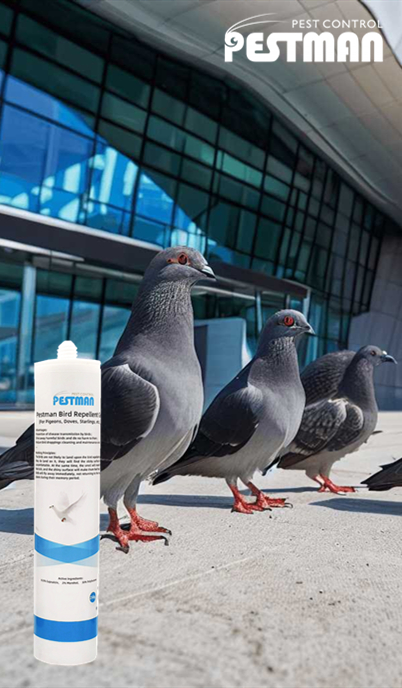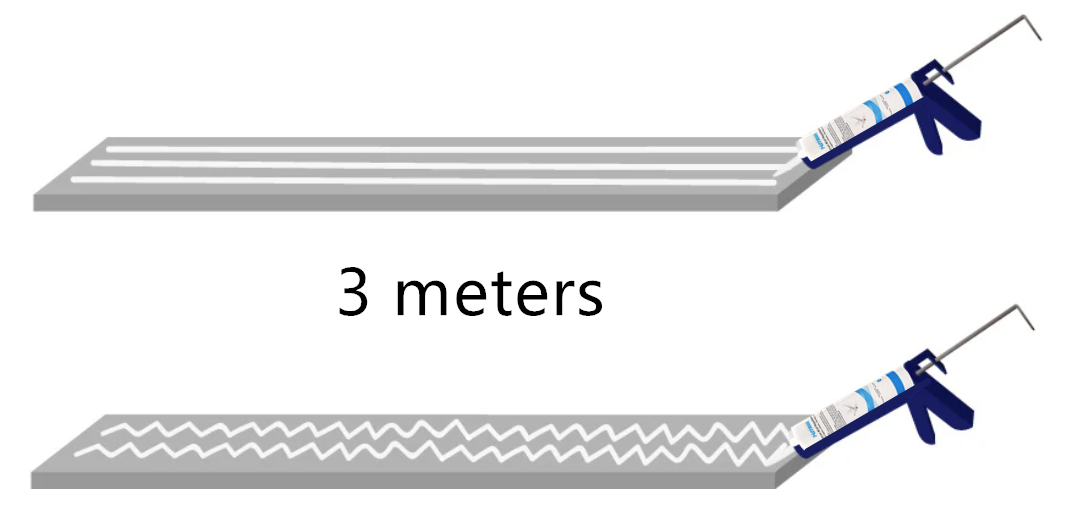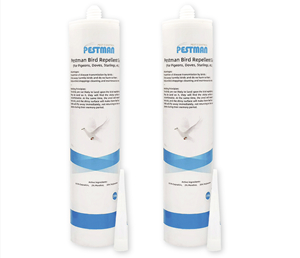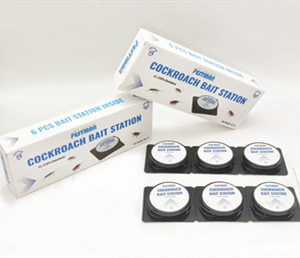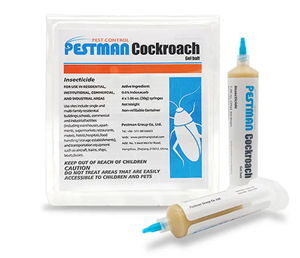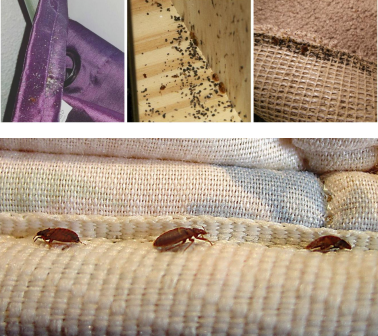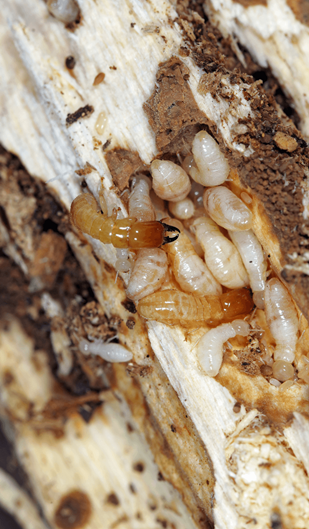INTRODUCTION
1. Growing Bird Infestation in GCC countries

In Gulf countries like the UAE, Saudi Arabia, Qatar, Oman, Kuwait, and Bahrain(GCC countries), modern urban development coexists with unique natural landscapes. These nations boast vast deserts and coastlines, attracting a wide variety of bird species. However, as urbanization accelerates, bird infestation has become a major challenge for urban management in these countries.
According to a recent report by Abu Dhabi Environment Agency in the UAE, 83% of high-density commercial areas and 67% of residential areas are facing bird infestation. This issue is not limited to the UAE; similar problems are increasingly common in Saudi Arabia, Qatar, Oman, Kuwait, and Bahrain. Frequent bird activities in urban areas not only damage building structures and city aesthetics but also pose potential threats to public health.
In these countries, buildings in high-density commercial and residential areas often become ideal nesting spots for birds, leading to damage to building exteriors and public facilities. Additionally, bird droppings not only affect urban hygiene but may also spread diseases, endangering residents’ health. At the same time, bird activities in cities create various inconveniences for urban management, such as increased cleaning costs and negative impacts on the city’s appearance.
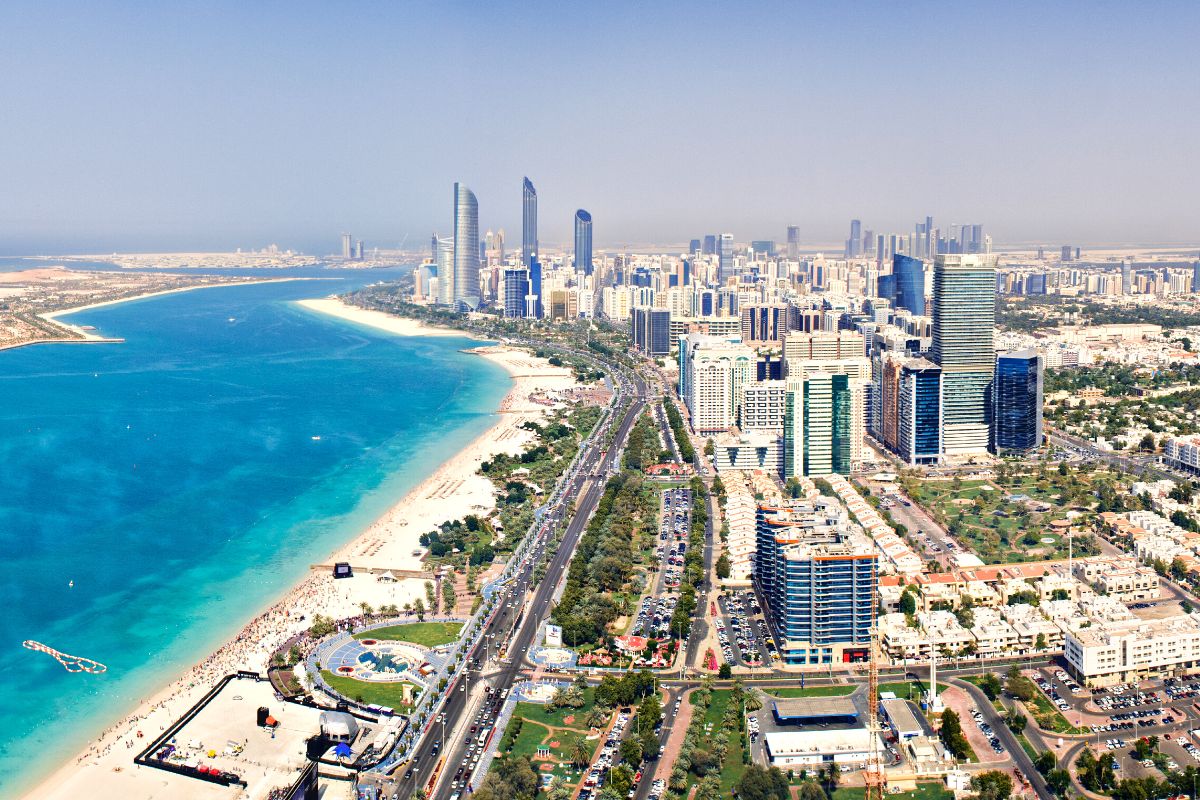
To address this issue, governments in Gulf countries are actively exploring effective solutions. On one hand, they are strengthening urban cleaning and hygiene management to reduce birds’ access to food in cities. On the other hand, they are promoting the transformation and upgrading of pest control and cleaning companies, turning professional bird control services from a niche business into a growing industry. Moreover, these countries are collaborating with environmental organizations to study how to protect birds while minimizing their impact on urban life.
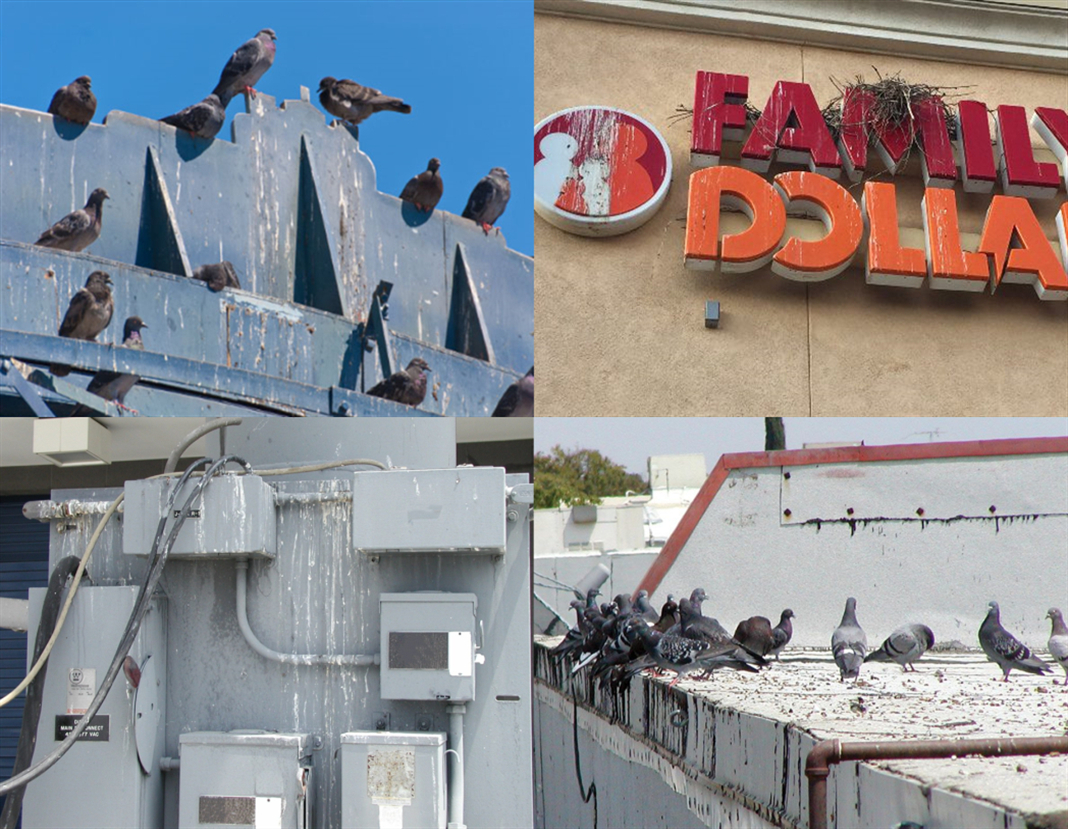
In summary, bird infestation has become a significant urban management issue in Gulf countries like the UAE, Saudi Arabia, Qatar, Oman, Kuwait, and Bahrain. To effectively tackle this challenge, these nations need to find a balance between modern development and nature conservation. Through comprehensive management measures, they aim to create a more livable urban environment for residents.

2. Types of Invasive Birds
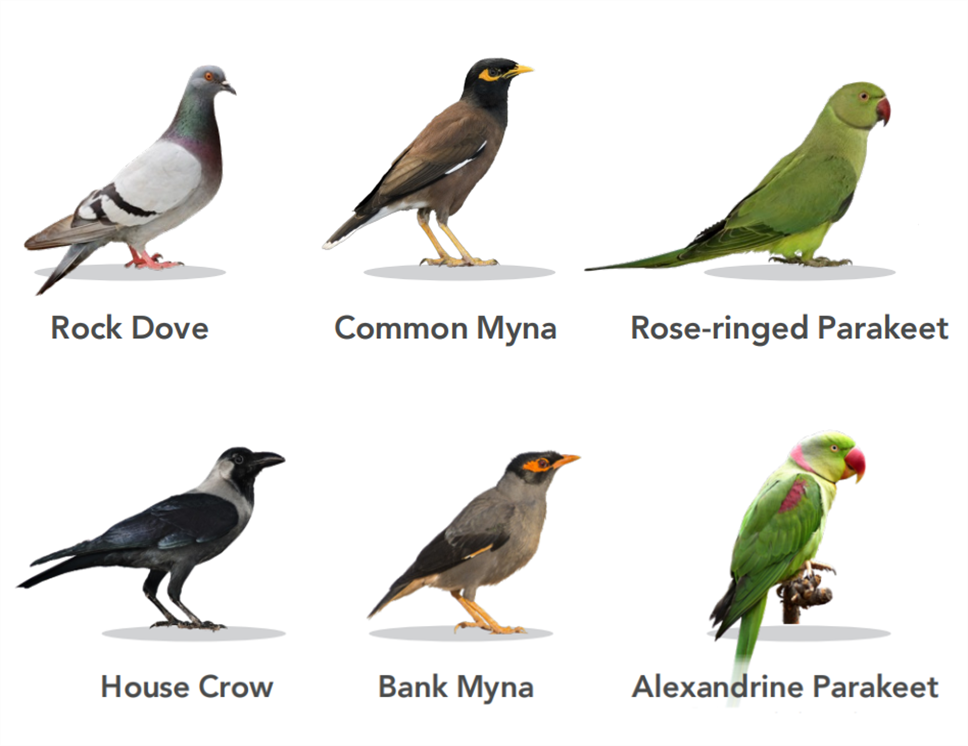
3. Harmful effects of bird invasion
Property Damage: Birds nesting in buildings can cause structural damage. For example, pigeon droppings contain uric acid (pH 3.5-4.2), which can corrode building surfaces. Birds nesting in drainage pipes or vents can also cause blockages.
Health Risks: Bird droppings and feathers carry diseases such as histoplasmosis, cryptococcosis, and psittacosis. These diseases pose serious threats to human health.
Aesthetic Issues: Accumulated bird droppings on building surfaces, vehicles, or public areas negatively affect the appearance of the surroundings.
Noise Pollution: Birds gathering in large groups can produce loud noises, disturbing residents.
Legal Risks: In some areas, properties that fail to address bird infestations in a timely manner may face fines.
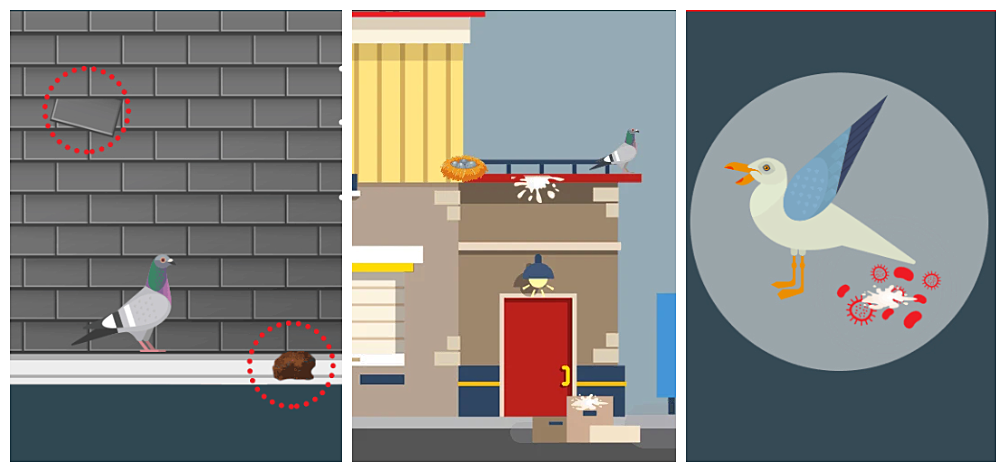
4.Business opportunities for cleaning companies and pest control companies.
The growing problem of bird infestations has created a significant demand for bird control services. From office buildings to residential complexes, the need to manage birds—and the mess they often leave behind—has become a pressing issue. As a result, some commercial clean companies and pest control companies are now stepping up to offer additional bird control services, catering to clients who want a one-stop solution for both cleaning and bird management.
Interestingly, tackling bird infestations doesn’t have to be complicated. With the right techniques and products, such as bird spikes, bird netting, sound devices, or bird repellent gel, businesses can effectively start offering bird control services. While it may seem like a niche area, the simplicity of the solutions means it’s an accessible market for companies willing to expand their offerings. As urban spaces continue to grow, so too does the opportunity for businesses to address this common yet often overlooked problem.

BIRD INFESTATION INSPECTIONS: A GUIDE FOR CLEANING & PEST CONTROL PROFESSIONALS
Building designs may include certain elements that attract invasive birds to nest. When inspecting for bird infestations, the following areas should be carefully examined:
Wide horizontal edges: Such as windowsills, signs, and parapet walls. Horizontal edges with a width of 15 cm or more, especially those with adjacent angles close to 90°, provide stable perching and nesting platforms for birds. Flat surfaces of 4 cm or more also attract birds to settle.
Open structures and decorative elements: Traditional wooden lattice screens (Mashrabiya) become ideal hidden spaces for birds like pigeons to nest.
Pergolas and other fixed shading structures: Fixed pergolas tend to accumulate bird droppings. It is recommended to use retractable awnings instead.
Clay tile roofs: Pigeons prefer the shelter provided by clay tiles and often nest in the gaps between them.
Uncovered roof equipment: These provide hidden nesting spots for birds.
Unenclosed utility spaces:
Open light wells and poorly maintained areas: Hard-to-clean light wells or roof edge corners become hotspots for bird habitation.
Unsealed garbage rooms and leaking water pipes: Leaks or leftover garbage indirectly attract birds for feeding.
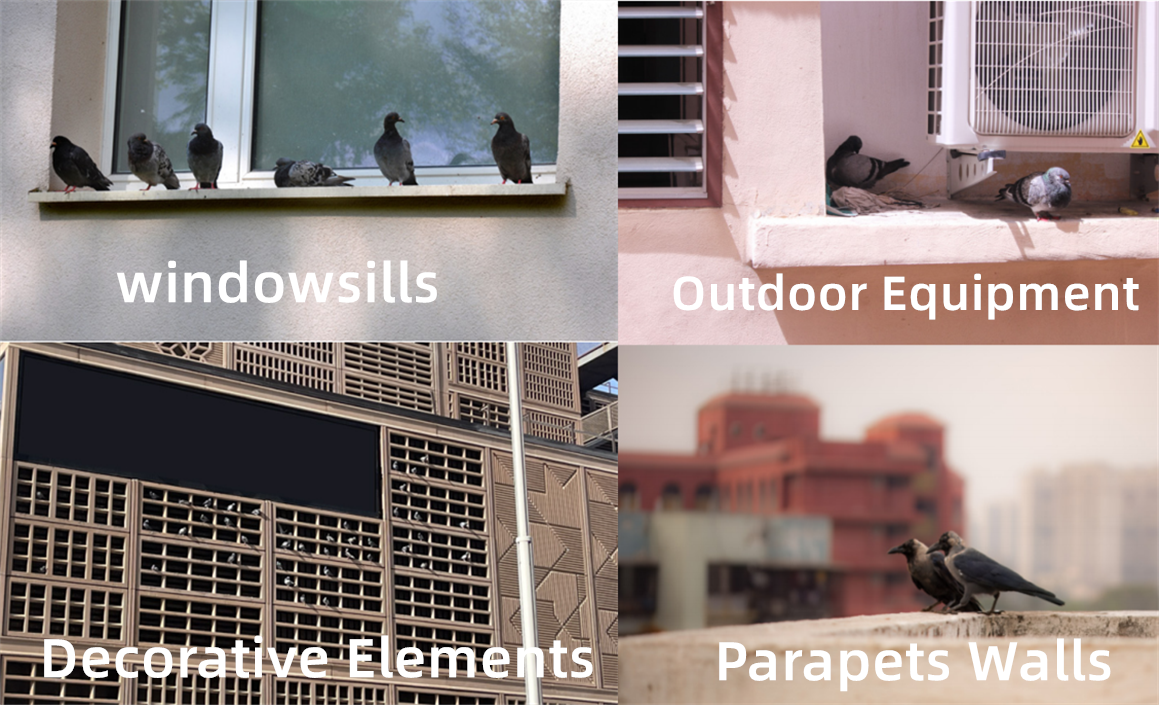
COMMON BIRD CONTROL METHODS
1. Behavior Management
1) Empty trash bins regularly and prohibit littering. Avoid feeding birds with grains or stray cats in urban areas.
2) Remove standing water promptly, check for leaking pipes, and close water tank covers.
2. Ultrasonic Bird Repeller
Ultrasonic devices produce high-frequency sound waves that irritate birds. These sounds make them avoid such areas. The devices are installed in enclosed spaces like warehouses, factories, or commercial buildings to repel birds without disturbing humans.
3. Bird Spikes
Install physical barriers on surfaces where birds perch or nest, such as windowsills or roofs. The spikes make it difficult for birds to land without causing them harm.
4. Bird Netting
Bird netting creates a barrier to prevent birds from entering specific areas, such as building facades, courtyards, or farmland. The materials used are usually durable, making it an effective solution to protect crops and sensitive infrastructure from bird damage.
5. Visual Deterrence
Use reflective devices like scare-eye balloons, CDs, and flash tapes to scare birds away with unpredictable flashes of light.
6. Bird Repellent Gel
This is a gel-based repellent applied to surfaces in areas where birds perch. It uses visual, tactile, and olfactory cues to deter birds. It only drives birds away without harming them. We recommend you use our Pestman Bird Repellent Gel.

WE RECOMMEND YOU CHOOSE PESTMAN BIRD REPELLENT GEL

Pestman Bird Repellent Gel is a long-lasting, non-poisonous bird repellent for use on ledges, sills, beams, rafters and hundreds of other indoor and outdoor locations where birds perch or roost. It is made from biological active ingredients. The principle of this product is to use bird’s vision and touch to achieve the purpose of repelling birds. It is only drive away the birds, and do no harm on them. Pestman Bird Repellent Gel can effectively discourage pigeons, starlings, sparrows and other nuisance birds from roosting on or returning to a treated area for up to one year.
If birds see the gel, they are not likely to land upon it. If they do land, they will find the sticky surface to be uncomfortable and won’t stay for long. They learn over time and do not return to the treated surfaces.
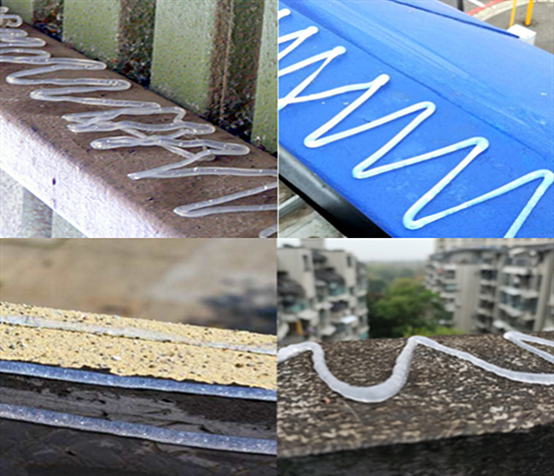
ADVANTAGES
– Repel birds away: Cut recurring cleanup and repair costs;
– Last for more than 365 days: Not affected by rain, sunlight, high temperature and other environments;
– No pesticides or harmful chemicals: The main active ingredients are biological materials. Safe for humans, animals and environment;
– Reduce health risks: Prevent the spread of diseases;
– Discreet: Offer less visual clutter than traditional bird spikes. Ideal for upscale venues like hotels and shopping malls.
– Humane bird repel and non-irritating: Only repels the harmful birds, and not kill birds or any other animals;
– Maintain property aesthetics: Prevent bird droppings from damaging the exterior of the building.
KEY COMPONENTS
Polyisobutylene:
Acts as a sticky, non-drying physical barrier that makes surfaces uncomfortable for birds to land on, forcing them to avoid treated areas.
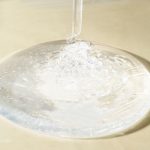
Menthol:
Releases a strong minty odor that irritates birds’respiratory systems, creating an olfactory deterrent without harming them.
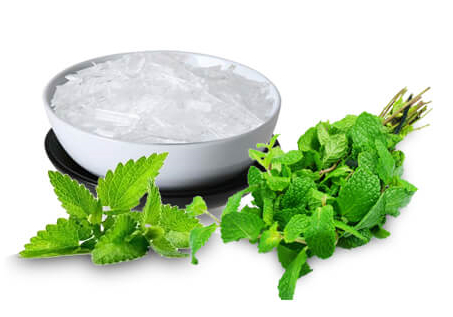
Capsaicin:
Triggers a harmless but irritating burning sensation when birds touch it, training them to avoid the area through negative reinforcement.

Citronellal:
Emits a citrus-like scent that repels birds naturally while being eco-friendly and safe for use in sensitive environments.

USAGE
1) Load the tube securely into a standard caulking gun.
2) Gently press the gun trigger to apply the gel in continuous strips, zigzag patterns, or dotted circles (spaced 20-30 cm apart).
3) For high-activity areas (e.g., ledges, beams), apply parallel strips 5-10 cm apart for enhanced coverage.
4) Refresh every 6-12 months in outdoor environments.
A tube will treat approximately 3 meters (10 feet) if you apply a 1cm-wide line.
Value
– Environmental Protection: Effectively and humanely deter pest birds without the use of harmful chemicals or poisons.
-Cutting-edge technology: Utilize cutting-edge technology and decades of proven scientific research for efficient, eco-friendly bird control.
– Long-term Protection: Deliver long-term results by addressing the root causes of infestations.
– Customer Satisfaction: The effectiveness and safety of Pestman Bird Repellent Gel can lead to higher customer satisfaction and trust.
– Cost Savings: Compared with traditional bird repellent products, it’s a cost-efficient solution.
– Differentiation: Offering advanced repellent technology can differentiate your business from competitors, showcasing their commitment to using the latest and most effective methods.
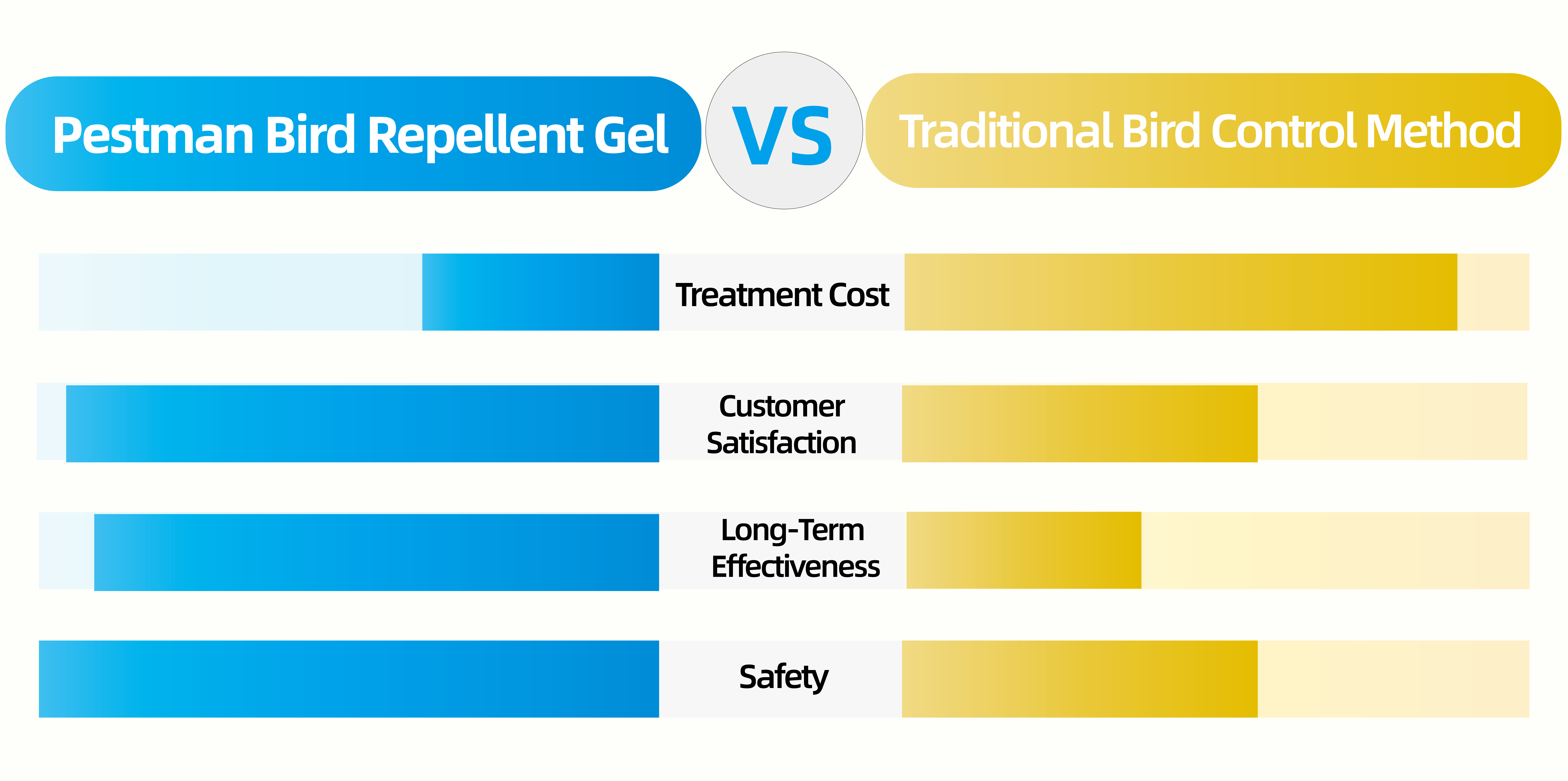
Case: How Pestman Gel Solved a Rooftop Pigeon Problem in Dammam
A modern office building in Dammam, Saudi Arabia, faced a serious pigeon problem. For months, the building’s rooftop had been covered with birds, mainly pigeons. Their droppings made the building look dirty and created hygiene concerns. The property manager tried several solutions, but nothing worked for long. Then, they contacted OasisShield Pest Management, a local pest control company. The experts from OasisShield first cleaned the rooftop thoroughly to remove all the bird droppings. Next, they applied Pestman Bird Repellent Gel along the edges where the pigeons usually landed.
The results were impressive. Just one day after the treatment, very few birds came near the rooftop. Over the next three months, the building staff monitored the situation carefully. They found that bird droppings had decreased by 99%. The rooftop stayed clean, and the client was very satisfied with the solution.
“This gel worked better than anything we’ve tried before,” said the property manager. “It stopped the pigeons without harming them, and we didn’t need to keep reapplying it.”
Pestman Bird Repellent Gel is a safe and effective way to keep birds away from buildings. For properties dealing with pigeon problems, this product offers a long-lasting solution.
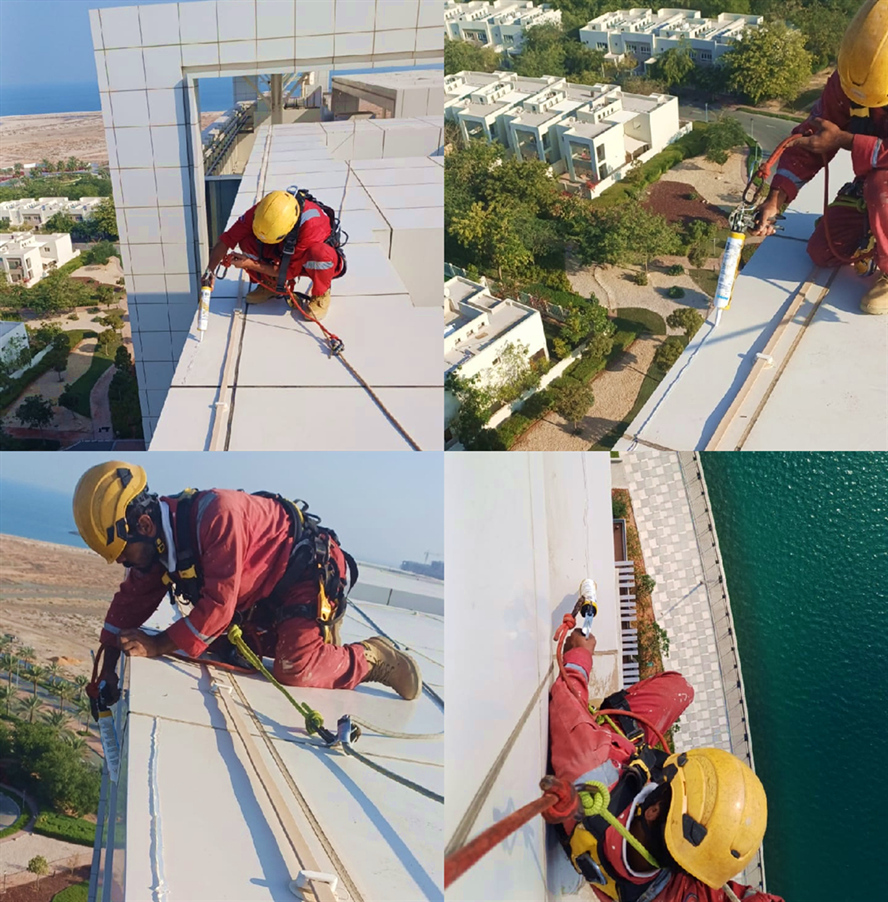
✔ Quick results – birds stayed away after just one day
✔ Long-lasting effect – 99% fewer droppings after three months
✔ Safe for birds – no harm, just gentle deterrence
✔ Low maintenance – no need for frequent reapplication
This case shows how Pestman Bird Repellent Gel can solve bird problems in urban areas effectively.
FEEDBACK
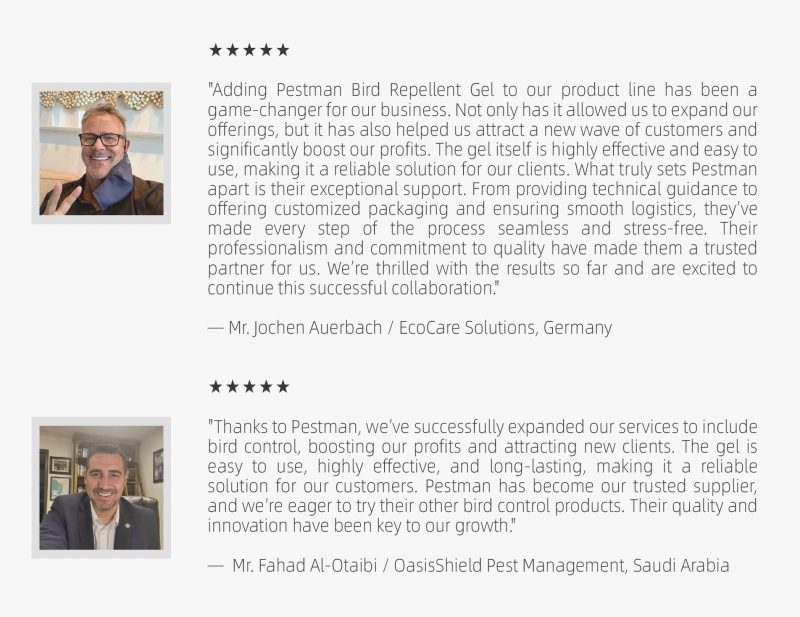
WHY CHOOSE PESTMAN?
We supply Pestman Bird Repellent Gel to over 800 pest control companies worldwide. We provide the most affordable door-to-door shipping solution and after-sales technical support.
Please contact us for more details!
WhatsApp: +8618958096066
You can also reach us through the chat window in the lower-right corner of our website.


